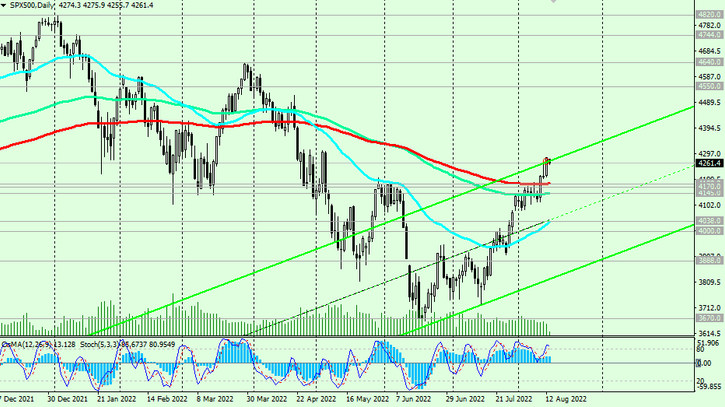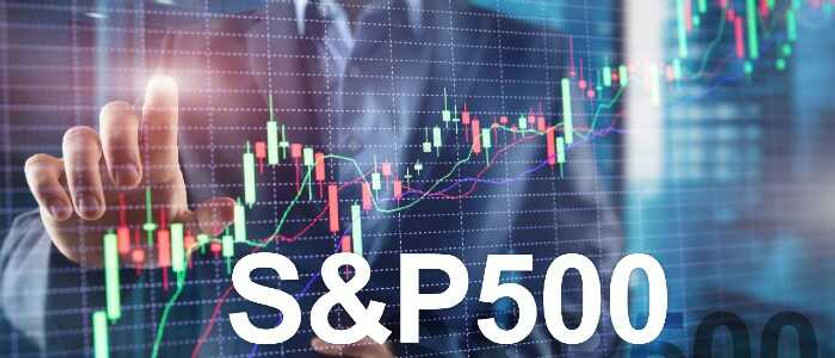At the beginning of the year, many economists expected the Fed to raise interest rates 7 times this year, by 0.25% each time. However, their opinion changed after the US consumer prices showed the biggest jump since 1982 in January, and then inflationary pressures began to build. And now, already in June, annual consumer inflation reached its peak over the past 40 years, rising to 9.1%. Following this, the DXY dollar index rose in mid-July to a maximum since October 2002 and to 109.14 mark.
Such a sharp jump in inflation led to increased expectations of a more aggressive tightening of the Fed's monetary policy.
Usually, an increase in the interest rate leads to a strengthening of the national currency and to a decrease in stock indices. However, the current situation in the American and world economies cannot be called normal against the backdrop of a sharp rise in energy prices, inflation and geopolitical tensions in the world.
By raising the interest rate, the Fed is in a difficult situation - to reduce inflation without harming the labor market and the economy. So whenever the Fed has raised interest rates this year, its leaders have said that the US economy and labor market are in good shape and will withstand further rate hikes.
However, the picture is not entirely clear. On the one hand, inflation does seem to have begun to slow down. This is evidenced by the CPI indices published last week. According to data provided by the Bureau of Labor Statistics, consumer inflation in the US slowed down in July: CPI came out with a value of 8.5% (on an annualized basis), which was below the forecast of 8.7% and the previous value of 9.1%. Core CPI (excluding food and energy prices) remained unchanged at 5.9%, which was also below the forecast of growth to 6.1%. On a monthly basis, core inflation rose 0.3% after rising 0.7% in June, also indicating a slowdown in its growth rate.
Weaker inflation data significantly dampened expectations for a larger Fed rate hike, putting pressure on the dollar. Moreover, the slowdown in inflation is accompanied by a slowdown in the US economy. According to preliminary estimates, in the 2nd quarter, US GDP fell again (by -0.9%), following a fall in the 1st quarter (by -1.6%).
Now, the likelihood of a 75bp Fed rate hike fell to 35% in September from 80% (before the publication of the CPI index), according to the CME Group, which also affected the yield of US Treasury bonds, causing it to sharply decline.
Against this backdrop, US stock indices continued to rise, reaching local highs over the previous few weeks by now.
Thus, futures for the S&P 500 are currently traded near 4260.00 mark, above the key support level 4180.00, and NASDAQ100 futures - near 13520.0 mark, above the key support level 13390.0.

Today, futures for major US stock indices, though not particularly declining, are not growing, while the dollar has strengthened again. As of this writing, DXY futures are traded near 106.14, 63 points above Friday's close.
Now, after the breakdown of the local resistance level 106.00, the breakdown of the next "round" resistance level 107.00 will be a confirming signal for the resumption of growth in DXY and the strengthening of the dollar.
Moreover, market participants again paid attention to the dollar as a defensive asset due to the escalation of tension around Taiwan: last weekend, following Nancy Pelosi, a delegation of American legislators arrived on the island, fueling tensions between the US and China.
Due to the absence of new drivers today, including news ones, further strengthening of the dollar and a decrease in stock indices are likely, but so far - in the form of a correction after a strong growth. In general, their positive dynamics is still preserved: it is necessary to look for opportunities to enter new long positions.





